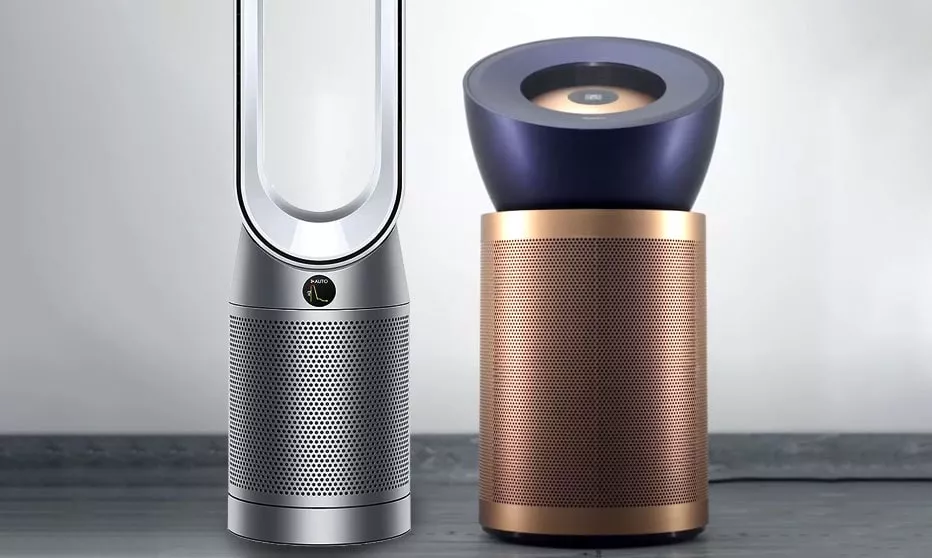Are Dyson air purifiers worth the money? Recently, Dyson launched its new product line, the Dyson Purifier Big+Quiet, which costs just around $1,000.
That’s a huge price for an air purifier.
So, what’s so special about this thing?
Considering that Dyson has been selling air purifiers for ages, as features built into the Pure Cool and Hot+Cool models, are Dyson air purifiers worth the money?
Hi, my name is Daniel, I am an electrical engineer. One of my favorite free time activities is to uncover marketing myths and publish them on this website. One of my most popular articles is about the alleged better energy efficiency of Dyson heaters, which turned out to be a huge marketing lie.
Today, we’re going to check in-depth how Dyson air purifiers compare to regular air purifiers. And I sincerely hope that Dyson air purifiers are better, given their cost of $400 - $1,000.
In which ways do Dyson air purifiers excel, if any?
Quick answer: Yes, Dyson air purifiers are worth the money for their detailed air quality monitoring features. On top of that, Dyson air purifiers look great. The Pure Cool and Hot+Cool models also have built-in fan and heating features. If you are looking for air purification only, a regular air purifier from Levoit or Coway is enough.
The major difference: Dyson air purifiers are (usually) multi-purpose
The biggest difference between Dyson air purifiers and regular air purifiers is that Dyson air purifiers are hybrid devices.
Most Dyson purifiers, except the Dyson Purifier Big+Quiet, is an air purifier only. Usually, the air purifiers are also fans. In fact, if I ask a random person on the street which products Dyson manufactures, I’d expect them to answer “fans”.
These Dyson fans are called Dyson Pure Cool or Dyson Purifier Cool.
If you spend more money on a Dyson fan, you also get a built-in heating function. These are called Dyson Purifier Hot+Cool.
One of Dyson’s most popular products, the Dyson Purifier Cool™ TP07 (click here to view it on amazon), is both an air purifier and a fan.
The Dyson Hot + Cool HP07 (click here to view it on amazon) is an air purifier, a fan, and a heater.
I haven’t seen this all-in-one concept in any other major air purifier brand.
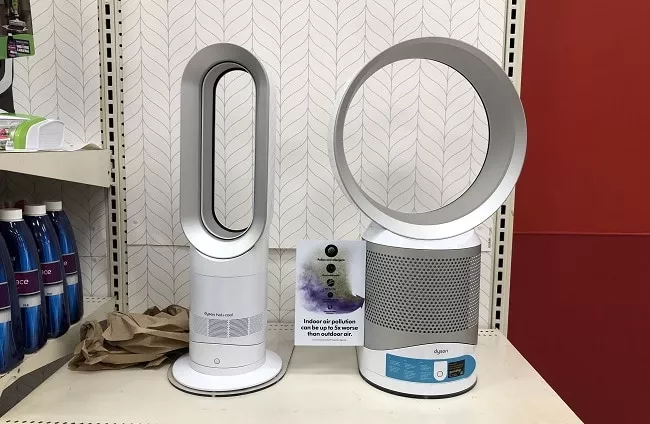 Dyson Hot+Cool fans with built-in air purification.
Dyson Hot+Cool fans with built-in air purification.
Power usage: Dyson air purifiers consume more due to increased airflow resistance
Having up to three products (air purifier, fan & heater) merged into one is great for marketing, but not so great for energy efficiency.
The Dyson TP07 air purifier and fan, for example, consumes the same wattage as other air purifiers, but arguably, it filters less air within the same time, simply because a Dyson purifier’s airways are very narrow.
Dyson, for example, advertises that their fans blow out air fast. To achieve that, they have to force the air through narrow slits. Dyson calls this “air multiplier technology”.
For a fan, that’s a great feature, because it indeed speeds up airflow. However, if you only want to purify air, that’s a drawback.
The narrow slits which Dyson air purifiers force air through increase air path resistance, which ends up increasing your electricity bill and decreasing the particle collection rate.
Additionally, air only enters through a comparably narrow band of air inlet holes at the base of the Dyson air purifier.
A real air purifier has as large and open as possible air inlets to reduce airflow resistance as much as possible.
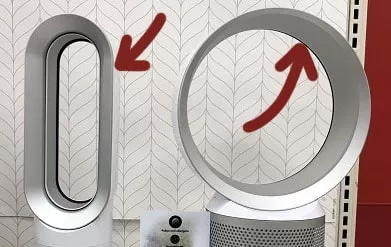 Dyson forces air through the thin loop amplifier. For a fan, that’s a good thing. For air purification, however, it is technically an inefficiency.
Dyson forces air through the thin loop amplifier. For a fan, that’s a good thing. For air purification, however, it is technically an inefficiency.
Filter size: Comparison between a Dyson and a pure air purifier
One example of a good air purifier is the Coway Airmega 400 air purifier(click here to view it on amazon).
It’s one of the rather premium air purifiers. I find Coway air purifiers very expensive (just like Dyson fans), but they are a great example for comparison in this case.
Air can flow into it from all sides, and, in comparison with a Dyson air purifier, the HEPA filters are much larger. They are 14.37 × 11.02 inches!
That’s what a real air purifier should be like.
For comparison, the filter of a Dyson Pure Cool Link tower fan is 7.7 × 7.7 inches (height × diameter). So, a Dyson filter is just about 51% of the size of the total filter size used in a Coway air purifier (Coway uses two filters per device).
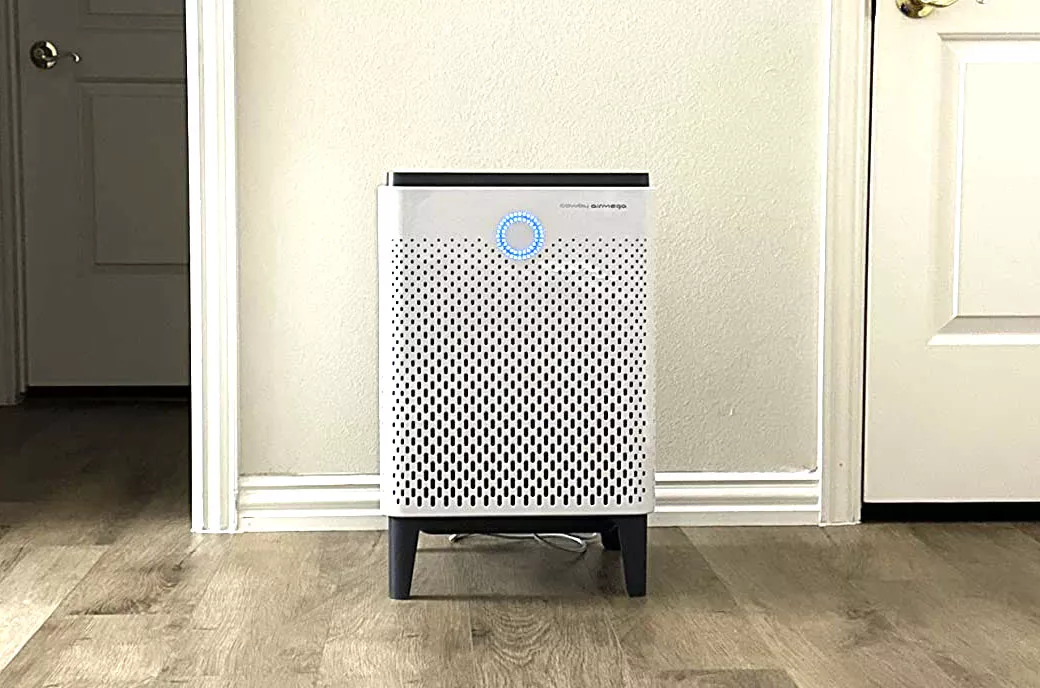 This is the Coway Airmega 400. It has much larger air intakes than any Dyson air purifier!
This is the Coway Airmega 400. It has much larger air intakes than any Dyson air purifier!
So, physically, it is impossible for a Dyson air purifier to compete with a pure air purifier in the same price range.
The easier air flows into an air purifier, the easier it is to pick up light particles suspended in the air.
Don’t understand me wrong. Dyson air purifiers work just fine. However, the idea of merging a fan and an air purifier into one product has its drawbacks. You don’t get an ideal purifier.
Filter replacement frequency: Do Dyson air purifier filters last longer?
Dyson recommends replacing filters every 12 months. However, there have been experiments that show that a HEPA filter’s particle collection efficiency decreases by 50% after just 6 months.
If purification is important for you, you should replace air filters every 6 months, regardless of what Dyson says.
I feel like Dyson recommends replacement every 12 months to not scare away customers.
In a note hidden within Dyson’s air filter information page, they admit that replacement should be every 6-12 months.
And in polluted areas, replacement should be more frequent.
In the previous section, I compared Dyson’s total filter area with that of a Coway air purifier. Admittedly, Coway air purifiers tend to be larger devices. But their size offers one major advantage: Large filters have a much higher capacity to hold particles, so they last longer and get clogged slower.
Dyson’s filter area is comparable to that of a regular air purifier at the $100 price point. So, Dyson filters clog just as quickly.
So:
Dyson air purifiers need filter replacements as frequently as any other air purifier. Dyson air purifier filters do not last longer. Dyson’s filters are not special.
Filter material: Are Dyson filters better than other HEPA filters?
Dyson says their filters are made of “borosilicate microfibers”. That’s the same material used in many other HEPA filters.
So, especially when it comes to filtering the air, Dyson Pure and Dyson Hot+Cool fans are no better than any regular air purifier.
Even the contrary is true:
My favorite air purifier, the Levoit Core 300 (click to read my review) comes with basically the same two-stage air filters (HEPA + activated carbon).
Activated carbon is the filter material that absorbs odors from the air.
Dyson air purifier filters are the exact same filters found in many other air purifiers. While they filter particles and odors well, you can get the same air purification effect from a much cheaper regular air purifier.
 Even my cheap Levoit Core 300 air purifier has a two-stage filter. The outer layer is HEPA, and the inner layer is activated carbon.
Even my cheap Levoit Core 300 air purifier has a two-stage filter. The outer layer is HEPA, and the inner layer is activated carbon.
What’s really nice: Dyson Air Purifier features that beat the competition
After all that criticism, let’s have a look at what Dyson air purifiers do better than other air purifiers.
One thing stands out to me:
Dyson air purifiers provide a much better user experience than regular air purifiers.
Detailed Air Quality Monitoring
Dyson Pure Cool air purifiers have a built-in LCD display that shows you real-time air quality measurements.
You get measurements for:
- overall air quality (via the Indoor Air Quality Index display)
- pollen and dust levels (via the Particulate matter PM 10 display)
- smoke, bacteria, and allergen levels (via the Particulate matter PM 2.5 display)
- nitrogen dioxide levels (via the NO2 display)
- volatile organic compound gas levels (via the VOCs display)
With a Dyson Purifier model, you always know about your room’s indoor air quality.
Many regular air purifiers don’t provide air quality monitoring at all. And those that do, are usually more expensive.
I have seen some air purifiers (such as the larger Levoit Core models) around the $200 mark which come with built-in particle sensors (PM 10 and PM 2.5), but I haven’t seen any air purifiers with built-in gas sensors.
With its detailed air quality monitoring, Dyson beats even the premium air purifier brands such as Coway and Levoit.
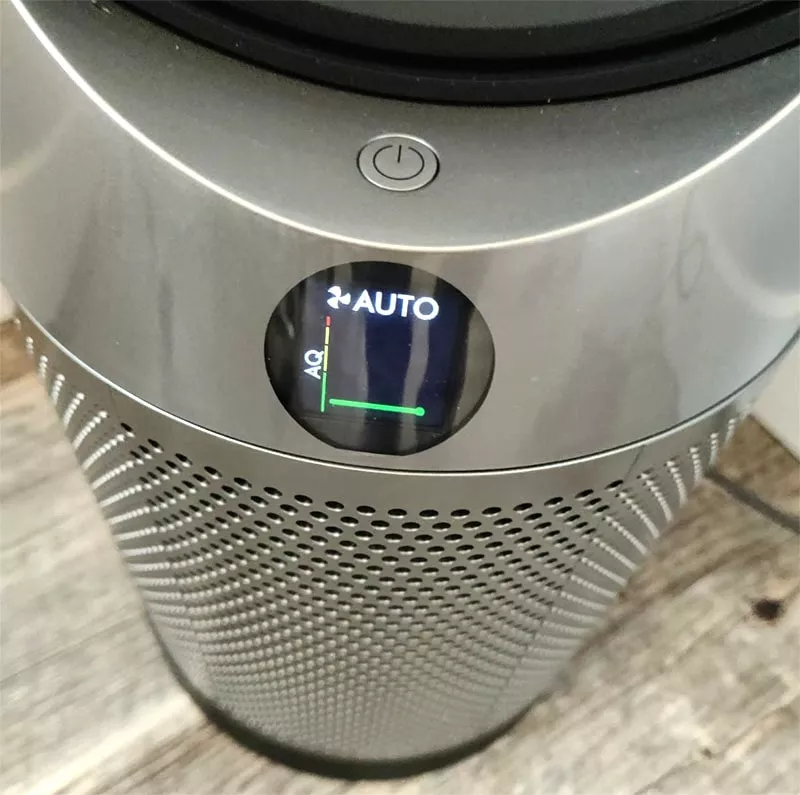 The green line indicates great air quality. When air quality decreases, the line moves upward toward the orange and red segments.
The green line indicates great air quality. When air quality decreases, the line moves upward toward the orange and red segments.
Filter life display: Minimizes filter replacement cost
Almost all air purifiers have a display, or an indicator light, indicating when to change filters.
Dyson air purifiers take a slightly different approach:
Dyson filters are composed of two stages, an outer HEPA filter and an inner activated carbon filter.
A Dyson purifier shows you exactly how much filter life remains for each side of the filter.
Which is really nice.
After all, the two filters could have two vastly different lifespans depending on the air composition in your home.
This way, you can replace carbon and HEPA filters separately and minimize filter replacement costs.
You only replace each filter stage when you need to.
Backward airflow mode
What I really like about Dyson Pure and Dyson Hot+Cool air purifiers and fans is their “backward airflow mode”.
You don’t have to run them in fan mode the entire time. When you don’t want your Dyson fan to blow air into the room, you can turn on “backward airflow mode”.
With the press of a button, your Dyson air purification fan inverses air flow direction (using a special air valve) and blows out air through the back of the device.
This feature is unique to Dyson fans.
And it shows that although Dyson builds a hybrid product (air purifier, fan and heater), they really care about the user experience of the individual features.
Regular air purifiers can only blow air in one direction. Oftentimes they blow air upwards, toward the ceiling.
So, naturally, they don’t disturb you. Regular air purifiers can also run on very low fan speeds. So low that you can’t really hear them.
A Dyson air purification fan in backward mode tries to mimic this real air purifier behavior.
I like that.
Design: Dyson air purifiers look great
Of course, one of Dyson’s number 1 selling points is their design. And they really do look great.
Much better, in fact, than many other regular air purifiers.
It’s hard to say for me as an engineer, but Dyson air purifiers are a status symbol.
They are fun to talk about when someone visits your home and asks about the features.
And they blend in well in most rooms.
I believe that more people buy Dyson fans because of their design than their actual technical features.
Which is not, per se, a wrong thing to do. But design can mislead you.
In a Dyson fan, the design does not mislead you.
Dyson fans deliver. They are great products. Although, admittedly, their price is relatively high.
But if you use them for a long time, they may be well worth it.
 Dyson fans just look great.
Dyson fans just look great.
Recommended Dyson Pure models
My personal favorite Dyson Purifier model is the Dyson Pure Cool TP07 (click here to view it on amazon).
It comes with all the features we discussed in this article, and it looks great.
If you want a Dyson purifier that can also heat I recommend getting the Dyson Pure Hot+Cool HP07 (click here to view it on amazon).
Conclusion: Are Dyson Air Purifiers Worth the Money?
If you want a high-end, stylish device that can serve as a fan, heater, and air purifier, Dyson is a good pick.
Their extra features like real-time air quality monitoring are cool but come at a high cost.
For just air purification, they’re not the best value for money.
You pay a premium for the brand and design.
But if those things matter to you, go for it.
